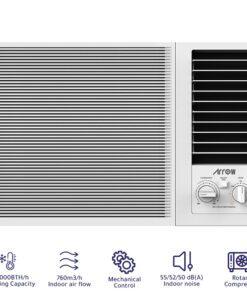Voltage Regulators Driving US Power Quality Market

Voltage regulators - Regulators maintain steady voltage for sensitive industrial and commercial loads.
A voltage regulator is an electronic device or a system designed to automatically maintain a constant output voltage, regardless of fluctuations in the input voltage or changes in the load conditions. Its primary purpose is to protect sensitive electronic components from voltage variations that could cause damage or malfunction.
How a Voltage Regulator Works
The fundamental working principle of a voltage regulator is based on a feedback loop. The system constantly monitors the output voltage and compares it to a stable, fixed reference voltage. If a difference (or "error signal") is detected, the regulator adjusts a control element to either increase or decrease the output voltage, bringing it back to the desired level.
This control mechanism can be implemented in a few different ways, leading to two main types of voltage regulators.
Types of Voltage Regulators
Linear Voltage Regulators: These are simpler devices that work by acting as a variable resistor in series with the load. They maintain a constant output voltage by dissipating any excess input voltage as heat.
How they work: If the input voltage rises or the load decreases, the regulator's internal resistance increases to "drop" the extra voltage. Conversely, if the input voltage drops or the load increases, the resistance decreases.
Advantages: They are simple to design, reliable, and produce very little electrical noise, which is crucial for sensitive circuits like those in audio equipment.
Disadvantages: They are inefficient because they waste power as heat. This makes them unsuitable for high-power applications where a large difference between the input and output voltage exists. A common type of linear regulator is the Low-Dropout (LDO) regulator, which is designed to operate with a very small difference between the input and output voltages, making them more efficient in specific use cases.
Switching Voltage Regulators: These are more complex but significantly more efficient. They work by rapidly switching a power semiconductor device (like a MOSFET) on and off to transfer energy in pulses to the load.
How they work: The regulator controls the amount of time the switch is on versus off (known as the duty cycle). By adjusting the duty cycle, it can control the average voltage delivered to the load. This method uses inductors and capacitors to store and release energy, which is much more efficient than dissipating it as heat.
Advantages: They are highly efficient (often over 90%), can handle a wide range of input voltages, and can be used to either step up or step down the voltage.
Disadvantages: They are more complex, more expensive, and can create more electrical noise due to the high-frequency switching. Common types include buck (step-down), boost (step-up), and buck-boost converters.
Common Applications
Voltage regulators are an indispensable component in almost every electronic device you can imagine, from consumer electronics to heavy industrial equipment.
Consumer Electronics: Found in everything from smartphone chargers and laptops to televisions and power tools to ensure a stable power supply for sensitive internal circuits.
Automotive Electronics: Used to regulate the voltage from a car's alternator to protect the battery and the vehicle's electrical components, such as the engine control unit and infotainment systems.
Industrial Automation: Critical for providing a stable power supply to motors, sensors, and control systems in factories, where fluctuations can lead to costly downtime and equipment damage.
Renewable Energy Systems: Used in solar power and other renewable energy systems to regulate the output from solar panels to a stable voltage for charging batteries or for grid integration.
Power Supplies: A core component of most power supply units (PSUs) that convert AC from a wall outlet to the stable DC voltages required by internal computer components.








